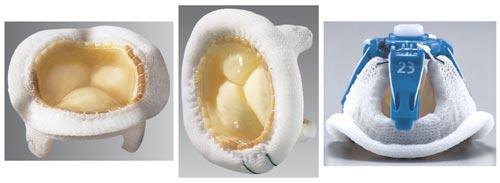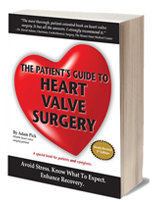Stents In Tissue Heart Valve Replacements?
By Adam Pick on May 22, 2008
Ever wonder why a stent is used in many forms of biological heart valve replacements?
I just received a question from Keith that reads, “I will be going in for heart valve replacement next month. I have opted for a tissue valve replacement. My surgeon referenced a pig valve replacement with a stent. What does this mean?”
Good question Keith! A stent is used to support a replacement heart valve when positioned in the heart. Specifically, a stented tissue valve includes a frame (the stent) on which the valve is mounted. Ultimately, the stent supports the leaflet tissue (e.g. mitral valve leaflets) that opens-and-closes as blood flows through the heart.
In many valves, the stent is covered by a fabric ring, known as the sewing ring. The surgeon implants the valve by suturing the sewing ring into the patient’s heart.

Above you can see an example of the Medtronic Hancock® II heart valve replacement device which uses a stent.
Alternatively, a stentless valve is often an actual heart valve taken from either a human donor (homograft) or a pig. The Medtronic Freestyle® aortic root bioprosthesis is a stentless valve consisting of the porcine aortic valve and a portion of the pig’s aortic root. This valve contains the “natural” leaflets found in the animal’s original heart valve. A stentless valve is sewn directly into the heart to take the place of the patient’s valve.
I hope this helps explain a little more about stents in heart valve replacements.
Keep on tickin!
Adam













